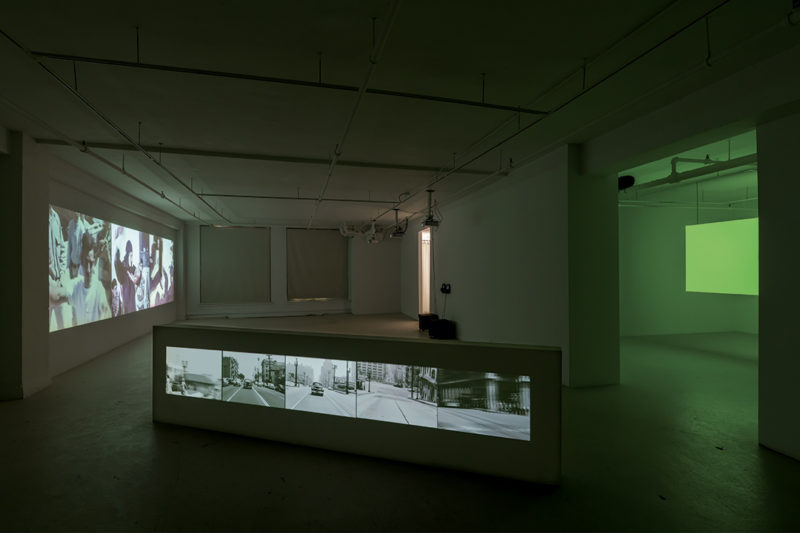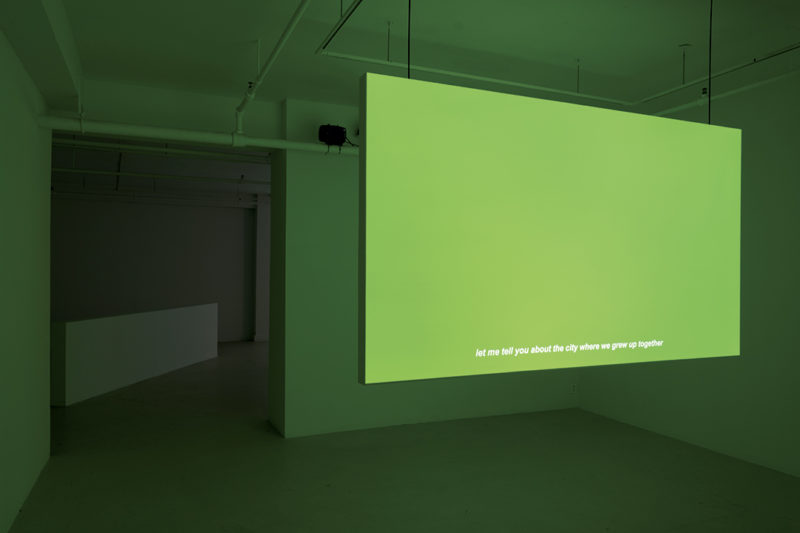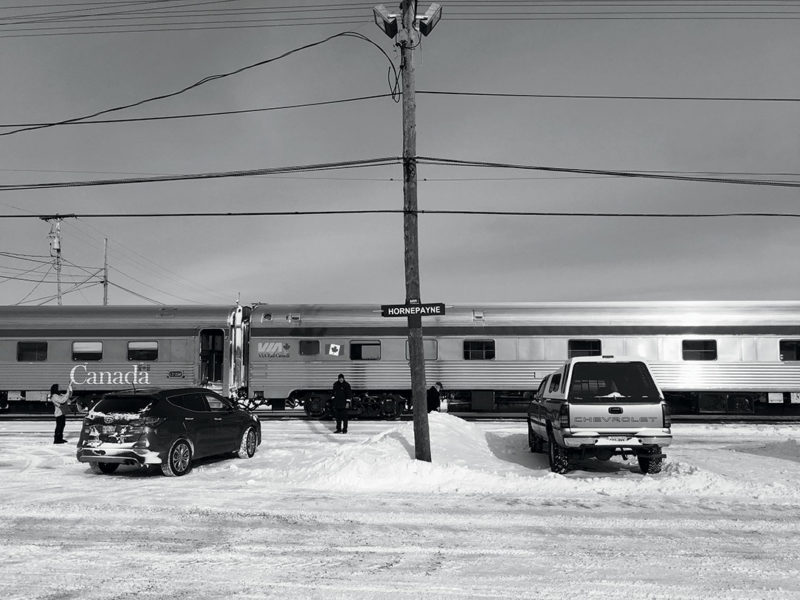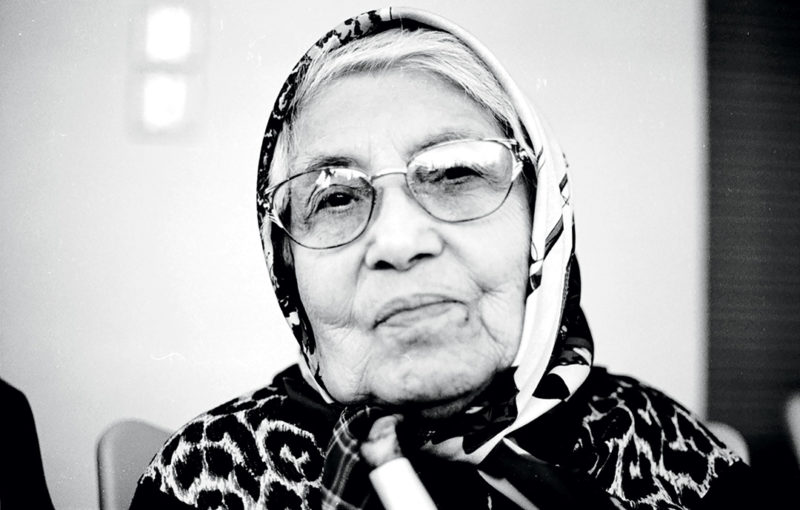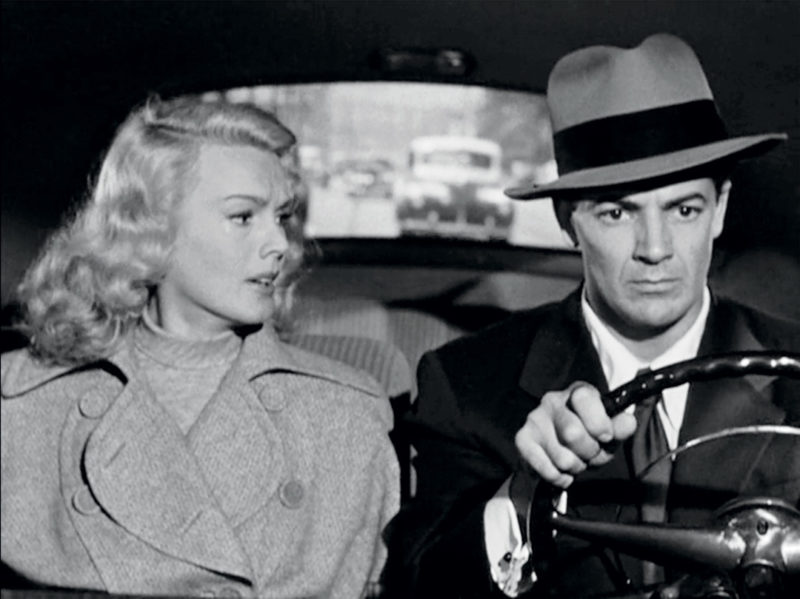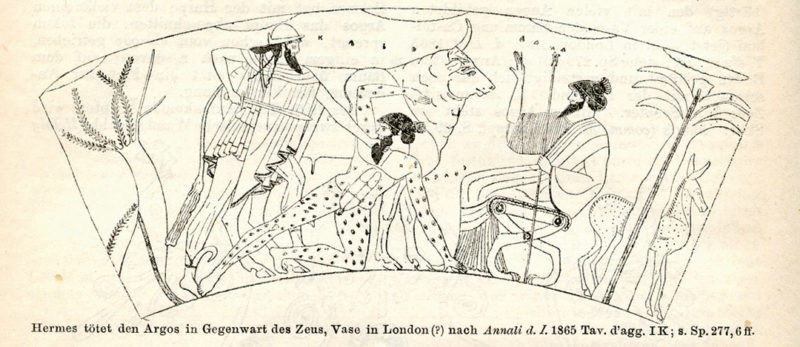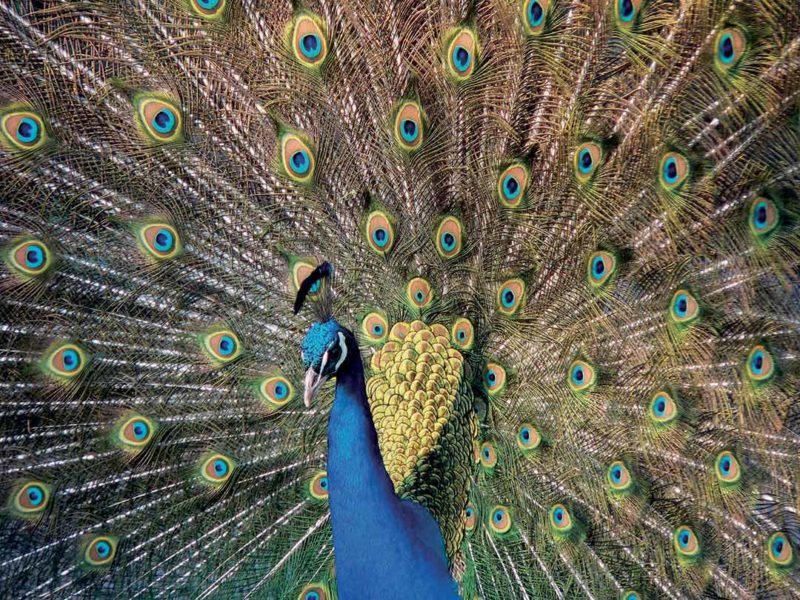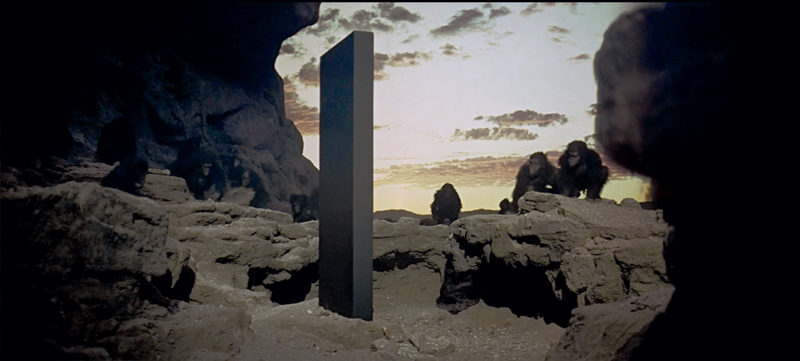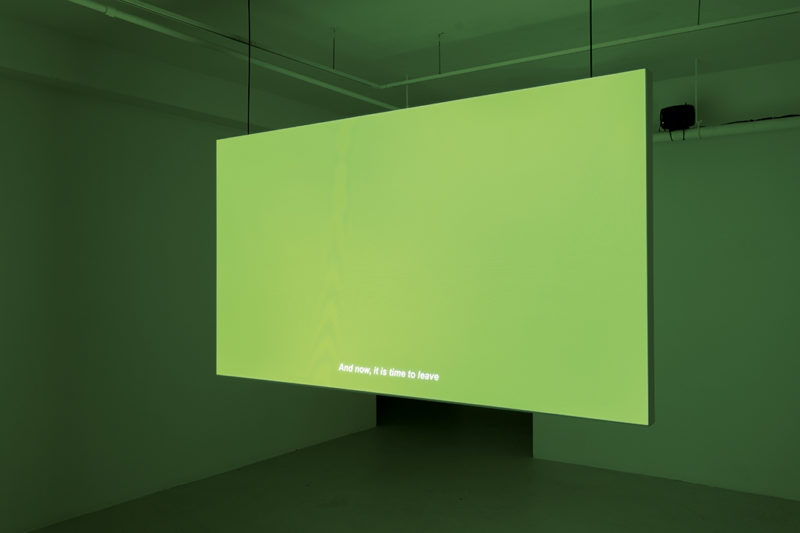[Fall 2018]
By Émilie Serri
In March 2017, I crossed the country by train. On board The Canadian, I travelled a total distance of 8,932 kilometres on a return trip as a way to get moving on writing my master’s thesis. For eight days and six nights, going from east to west, and then from west to east, I tried to put words to an identity related question that inhabits my work.
Why take this long trip for a thesis that could well have been written from the comfort of my couch? For the simple reason that I wanted my writing to be marked by the same movement, the same displacement, as that of my thesis. Forcing displacement to write about a displaced identity; disorienting myself to echo my parents’ experience of expatriation. Discovering my country of birth through a window in order to reflect on my country of origin.
Looking back, I understand that there was also an underlying desire to put myself on stage, to embed myself in a history and a memory that did not completely belong to me – that of an inaccessible country of origin, Syria.
Syria: A “Familiar Elsewhere.” I was born and grew up in Montreal; my parents are immigrants. My mother is Belgian, and my father is Syrian. My parents are not exiles or refugees. They are expatriates. Both left their country of origin voluntarily. I am neither refugee, nor exile, nor expatriate. And yet, I have the feeling that I’ve been displaced.
In 2010, accompanied by my father and sister, I went to Damascus, Syria, my father’s hometown, for the first time in ten years.
The first day, when I landed in this family of “unknown people,” whose language I didn’t understand, my initial reflex was to pick up my 35 mm camera. I pressed the shutter as if each flexion of my index finger constituted the beginning of an answer to my questions. Through the viewfinder, I immediately found my grandmother.
I recognized her expression, both gentle and proud, watching over us from her place at the low living-room table. Her gaze intimidated me, but the camera gave me the distance necessary to draw closer. She was the first one I photographed.
I remember photographing her as if she belonged to an “other” world, a “familiar elsewhere” to which I would never have full access due to my status as a foreigner. I remember also having been aware that this was probably the first and last time that I could do this . . . as if I was anticipating what was to come.
I photographed her through necessity more than pleasure. I felt the urgency of creating a bank of memories for myself. I knew that my time was limited.
Soon after our visit, the Syrian revolution started. The people took to the streets and peacefully demanded freedom and democracy. But the brutality of the regime’s repression gave rise to civil war.
The conflict was still in its early days when my grandmother died. I told myself that perhaps she had preferred to pass on rather than to witness the slow agony of her country. I believe that by taking her photograph, in any case, I was already saying farewell to her.
It was these two events – the beginning of the revolution and the death of my grandmother – that brought up a question that had been latent for a long time: How could one mourn a country and a history that are at once familiar and foreign? Is it possible to find a mooring for a Syrian “post-diasporic”1 identity in the absence of referents, when war threatens the country with extinction? What role do archives play in the “post-production” of this identity?
No time for tomorrow: Telling Oneself Stories to Make History. Because it was impossible for me to go to Syria after the war started, I turned to archives. At the beginning of my research, I wanted to “see” – to see Syria, to grasp it through my eyes. “To see” as if to reassure myself that it still existed. I looked in the “images of others,” in amateur films, for a cultural mooring, a collective memory with which I could interweave my family memory.
When I found the travelogue shot in 16 mm by two foreigners during a trip to Busra, in southern Syria, I felt that these images of a wedding contained a broader history of the country, and I saw in them the opportunity to reinterpret my relationship with this past and what it means to me today. I watched this sequence hundreds of times, each viewing offering a chance to observe new details and make new comparisons.
I told myself stories. I thought that the groom could be my grandfather and the bride my grandmother. I found an unsettling resemblance between the boy I saw in the film and my brother Karim. I projected my family’s past into these anonymous images.
My first thought, therefore, was to process these impersonal images “as if they were mine,” to make something “public” into something “private” and something “distant” into something “personal.” In editing, I drew on a family video to superimpose on these anonymous images – those from the travelogue, but also sequences documenting the war shot by Syrians – a recording that my father made for his mother on Mothers’ Day, and a recent excerpt of him teaching me to count in Arabic.
So, combining personal documents and archives found on the Web, I tried to reconstruct a memory scattered through time, the interweaving of the “private” with the “public,” and their interchangeability that transformed these anonymous images into identity markers.
LDSUR (left.down.straight.up.right): The Image Trace. I found these images by chance, through a series of keywords. I was looking for Syria; I found it only through its absence. A retro-looking car, steep streets, a Frontenac sign, palm trees, a film noir aesthetic. My reading of images was even more muddled because, having typed “Damascus” on the keyboard, I was naively expecting to find it in the images displayed. I had many questions and few answers. Disoriented and unable to situate myself, I sought references in Web surfers’ comments.
Contrary to what many suggested, the city represented was not San Francisco but Los Angeles. Through a detailed analysis of the route taken by the car and of its model, Web surfers had identified the date and place when the film was shot: it was 1947, in the Bunker Hill neighbourhood before it was destroyed. Even more surprisingly, the sequence had been shot for use as the background for a scene in Douglas Sirk’s Hollywood film Shockproof.
It took me some time to make the connection between these filmed images of Los Angeles and my own quest. But I now realize that one element in particular had greatly contributed to my fascination with these images and my desire to work with them: their belonging simultaneously to the realms of documentary and fiction. For although their main purpose was to be the background for a scene in a fiction film, they also provided evidence, as documents, of a city that no longer exists. In this sense, to me they formed traces of what had disappeared and also reflected both the destruction of Syria and the disappearance of the family movie theatre the existence of which had largely shaped my Syrian identity.
The Green Screen, or, the Birth of a New Myth. It is the story of Zeus, the king of gods, and his “divinely jealous” wife, Hera. Hera suspected that Zeus had been unfaithful and had him followed by a detective who “kept an eye” on him. But Zeus had the ability to change shapes, and he had no trouble fooling the detective. When he was with Io, he transformed himself into a bull and Io into a heifer, and the detective was utterly oblivious. Hera then abandoned the detective for a super-lookout called Panoptes, who had eyes all over his body. Panoptes, whose name meant “he who sees everything,” could see in all directions and any distance, and at all times. Therefore, he was able to see Zeus as Zeus, Zeus in the process of metamorphosing into the bull, and Zeus as a bull. Exasperated by Panoptes, Zeus wanted to get rid of him and, to this end, he found Hermes. Music did not yet exist, and Hermes was the first to invent instruments and musical scores. Armed with a pan flute, Hermes approached Panoptes. When he began to play, Panoptes, who had never heard music in his life, was first dazzled and then brought to tears. His tears covered all of his eyes and he could no longer see. Hermes then killed him with his cutlass. Hera, defeated and embittered, gathered up Panoptes’s eyes and threw them away. At that very moment, a bird was passing by. It was a peacock. And that is why Panoptes’s eyes are found on the peacock’s feathers. And that is why, when Michel Serres recounts this myth, he says, “Do you see the peacock spreading its tail? Not really, he sees you.” So, peacocks see us, and so do screens. Just as the bird benefited from Hera’s divine gesture, technology has made the machine-screen the heir to the eyespots that survey us “all the time, in every direction, at any distance.” In the digital age, screens have become the new relics. We think that we are watching them, but really they are watching us. The green screen, whose capacity for metamorphosis equals Zeus’s, is a particularly good illustration of the tenuous links that can be made between technology and the divine.
The technique of compositing, which makes it possible to integrate objects filmed separately into a single image, dominates image production today, whether in film, television, or advertising. Yet, although its use is widespread, the green screen always remains invisible to spectators. Its function is strictly utilitarian: it must disappear to allow a virtual space to be embedded.
In the myth of Panoptes, the human being is a simple lookout. With only one pair of eyes, human beings cannot glimpse the interstices. But the green screen exists only in its transitory state. It is an edge, an interstice, an empty space that must be filled. Between presence and absence, image and non-image, everything and nothing, its potential is infinite. The invisible screen has the capacity to make everything visible. It contains, in a way, all the images of the world.
Like Kubrick’s monolith in 2001: A Space Odyssey, the green screen has the capacity to travel through time, and it bears the burden of a memory and a knowledge that surpass those of humans. A presence that is verified only by its absence, an interchangeable form, a transition between irreconcilable worlds, and a memory without limits or borders are among the attributes of this technique, which seems akin to the sacred.
R0G255B0: Filling the Void by Allowing It to Appear. In R0G255B0, I used the green screen to travel into the memory of my country of origin, Syria. I sought to fill the void by allowing it to appear, generating a space of representation in which I could reassemble the fragments of this country of origin that eludes me, while I still haven’t had time to get to know it.
In the fight between Hermes and Panoptes, a completely different battle was also playing out – that between two distinct types of messages: the aural and the visual. R0G255B0 is built around this same tension between image and sound. For to be able to hear, I had to block the image. And, so that they could see more clearly, I had to blind the spectators. Close their eyes to open them wider . . .
On a double green screen, hung in the centre of the room, I composited not images, but texts and sounds. When they enter the gallery, spectators are first immersed in green. On the soundtrack are excerpts of interviews recorded with my father in which he recalled the Syria of his childhood and times spent in the family movie theatre, giving a first layer of meaning. On the opposite side, as a counterweight to my father’s nostalgic point of view, are written accounts relating the daily experiences of Syrians who remained in the country during the war. And then, a synthetic voice reading a script made from old tourist guides to Syria disrupts spectators’ orientation while claiming to tell them how to navigate through this invisible country.
Through the juxtaposition of personal documents and public archives from different temporalities on the virtual space of the green screen, a network of relations between these documents and these memories is created. The commercial green screen technique is thus diverted and appropriated for political ends. Both space of possibilities and portrayal of absence, the double screen becomes the surface on which are embedded, in the form of oral and written accounts, fragments of the memory of a country that is going extinct.
Of course, to fill this empty space with images, the spectator is essential. Because the screen gives nothing to see, viewers are forced to make their own spectacle. By moving around the monolith and trying to reconcile sound and text, spectators become active. Having been refused an image, they are led to generate new ones that belong to them. They therefore become actors in their own film. Translated by Käthe Roth
Born in Montreal, Émilie Serri is a filmmaker and visual artist. She has a degree in cinema from Concordia University and has just completed a master’s degree in visual and media arts at UQAM. Her work is distributed by the Parisian experimental film company Light Cone and has been shown in festivals in France, Switzerland, and Greece and in art galleries across Canada. In 2018, she received the prestigious Bronfman Grant in contemporary art.
[ Complete issue, in print and digital version, available here: Ciel variable 110 – MIGRATION ]
[ Individual article in digital version available here: Émilie Serri, The Space Between the Seconds ]

